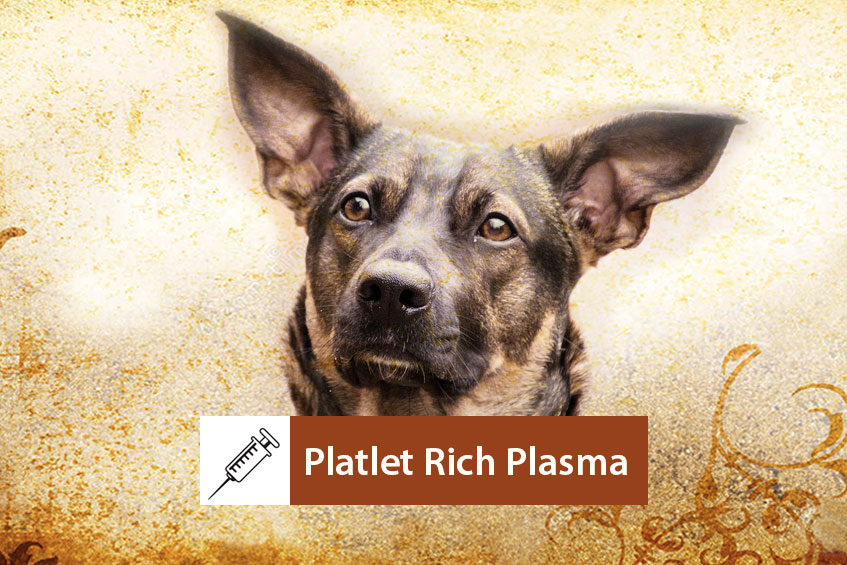Platelet Rich Plasma
Platelet Rich Plasma Therapy (PRP)
What is Platelet Rich Plasma?
Platelet Rich Plasma Therapy (PRP) is a cutting-edge treatment that is available at a fraction of the cost of stem cell therapy and has been used successfully for years in both human and equine medicine. PRP has now been introduced in the treatment of cats and dogs all over the world and the success rate and effectiveness of this therapy is causing a rapid growth in its popularity.
How Does PRP Therapy Work?
The science behind PRP therapy is quite complex but the underlying principle is simple. Blood is drawn from your pet. Use of the patient’s own blood (autologous blood) to obtain the platelets helps eliminate the risk of disease transmission or allergic reactions. The blood sample is then centrifuged to get PRP. This new platelet rich plasma is then injected into the patient. By concentrating the factors in platelet rich plasma and injecting them directly into the site of injury, we give a boost to the body’s natural ability to heal.
The Steps:
- A small amount of blood is drawn from your pet. Depending on the animal’s temperament, this can be done without the use of anesthesia.
- The blood sample is then put into a centrifuge. Red and white blood cells are removed from the plasma, which is the liquid component of the blood. When the red and white blood cells are removed, the plasma that remains has a high concentration of platelets.
- The new Platelet Rich Plasma is then injected into your pet. The entire procedure can be completed in less than 45 minutes. At this point your pet may be given a sedative depending on the degree of injury and pain. Keep in mind that PRP is usually a “same day” procedure, meaning you and your pet will be able to return home that same day.
What Does PRP Therapy Help Treat?
PRP therapy is primarily used to promote the healing of musculoskeletal conditions caused by either injury or illness. PRP therapy can be used to treat common problems such as ligament tears and sprains, muscle tears, luxating patellas, intervertebral disk disease (back and neck pain), osteoarthritis, tendonitis, elbow dysplasia, hip dysplasia and in some cases, skin and dental issues. Dr. Radica is also currently evaluating the effect of PRP in the treatment of perianal fistulas, pannus, corneal ulcers etc
How Effective is PRP?
There is an abundance of clinical and research data that has show PRP therapy can be effective in treating new injuries as well as chronic cases.
PRP therapy has produced great results both as a stand-alone treatment and also as an augmentation to other treatments such as medication, supplements, physical therapy and exercise.
Is PRP Right for Your Pet?
PRP therapy is an option that you should discuss with your veterinarian especially if your pet has musculoskeletal issues. The PRP treatment is relatively affordable and there is an extremely low risk of injury or adverse reaction. Please note that if you are referred to Dr. Radica for a PRP treatment, a full consultation with Dr. Radica is required to determine if PRP is absolutely right for your pet.
604.436.0726



No Comments